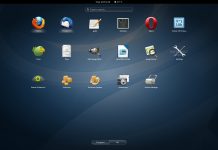As a tech enthusiast, I enjoy exploring various operating systems to understand their capabilities and potential applications. One name that consistently stands out in the realm of Linux distributions is AlmaLinux. With its community-driven approach and compatibility with Red Hat Enterprise Linux (RHEL), AlmaLinux has emerged as a robust alternative for developers and system administrators alike. In this article, we will look at features, benefits, and optimizations that make AlmaLinux a top-choice OS.
What is AlmaLinux?
AlmaLinux is an open-source, community-driven Linux distribution that serves as a binary-compatible fork of RHEL. Launched in March 2021 by CloudLinux, AlmaLinux aims to fill the gap left by CentOS, which underwent significant changes in its release strategy. This shift has left many users seeking a reliable and stable platform, and AlmaLinux provides just that, with a promise of long-term support and a vibrant community backing it.
Key Features of AlmaLinux:
- Binary Compatibility: AlmaLinux is designed to be fully compatible with RHEL, allowing users to seamlessly transition from CentOS or RHEL without any major disruptions.
- Free and Open Source: Being open-source, AlmaLinux allows users to freely use, modify, and distribute the software, fostering innovation and collaboration.
- Long-term Support: AlmaLinux commits to providing updates and support for five years, ensuring that users have a stable environment for their applications.
- Robust Security: The distribution incorporates security features from its parent company, CloudLinux, making it a secure choice for enterprise environments.
Why Choose AlmaLinux?
When I first encountered AlmaLinux, I was intrigued by its potential to serve as a reliable operating system for various projects. Here are some reasons why I believe AlmaLinux is worth considering:
1. Stability and Reliability
In the tech world, stability is paramount. AlmaLinux provides a stable environment that is ideal for production servers and enterprise applications. The distribution undergoes rigorous testing to ensure that users can deploy it confidently.
2. Active Community Support
One of the significant advantages of AlmaLinux is its active community. With a strong base of contributors and users, it offers an extensive repository of resources, forums, and documentation. This community-driven approach ensures that help is readily available for any issues that may arise.
3. Easy Migration
For those transitioning from CentOS or RHEL, migrating to AlmaLinux is straightforward. The process involves minimal changes, making it easier for users to maintain their existing workflows and applications. This ease of migration was a significant factor for me when considering different Linux distributions.
4. Enhanced Performance
AlmaLinux is optimized for performance, making it suitable for various workloads, from web servers to database hosting. Its efficiency allows for better resource utilization, which is critical for tech enthusiasts looking to maximize their systems’ capabilities.
Getting Started with AlmaLinux
If you’re interested in trying out AlmaLinux, getting started is easy. Here’s a step-by-step guide:
Step 1: Downloading AlmaLinux
You can download the latest version of AlmaLinux from the official website. The site provides various options, including ISO images for different architectures. I recommend checking the AlmaLinux download page for the latest releases.
Step 2: Installation
Once you have the ISO, you can create a bootable USB drive or use a virtual machine to install AlmaLinux. The installation process is straightforward and user-friendly. During the setup, you can choose the packages you want to install, allowing for customization based on your needs.
Step 3: Initial Configuration
After installation, it’s essential to perform some initial configurations. Update your system using the following command:
sudo dnf updateThis ensures that you have the latest security patches and software updates.
Step 4: Exploring the Package Manager
AlmaLinux uses dnf (Dandified YUM) as its package manager, which is powerful and easy to use. You can install additional software packages by executing commands like:
sudo dnf install package_nameThis flexibility allows you to optimize your environment according to your specific needs.
Optimizing AlmaLinux for Performance
To get the most out of AlmaLinux, I’ve found that there are several optimizations that can enhance performance. Here are a few tips:
1. Enable EPEL Repository
The Extra Packages for Enterprise Linux (EPEL) repository provides additional packages that are not included in the standard AlmaLinux repositories. Enabling it can give you access to a broader range of software:
sudo dnf install epel-release2. System Tuning
You can optimize the system’s performance by tuning kernel parameters. For example, adjusting the swappiness value can help manage memory usage more effectively:
sudo sysctl vm.swappiness=103. Use a Lightweight Desktop Environment
If you’re using AlmaLinux on a desktop, consider installing a lightweight desktop environment (like XFCE or LXDE) to improve performance. This can significantly reduce resource usage compared to heavier environments like GNOME or KDE.
4. Regular Updates
Regularly updating your system is crucial for maintaining performance and security. I recommend setting up a cron job to automate updates or manually checking for updates periodically.
Conclusion
AlmaLinux stands out as a powerful, community-driven Linux distribution that is well-suited for tech enthusiasts and professionals alike. Its stability, ease of migration, and active community support make it a compelling choice for anyone looking to explore the Linux ecosystem.
Whether you are deploying applications, experimenting with AI, or managing content, AlmaLinux offers a robust platform that can adapt to your needs. I encourage anyone interested in Linux to give AlmaLinux a try and experience the benefits it has to offer.
For more information, you can visit the AlmaLinux official website and join the community to stay updated on the latest developments.
By exploring AlmaLinux, I’ve discovered a distribution that not only meets my expectations but also inspires confidence in those looking for a reliable Linux environment. What are your thoughts on AlmaLinux? Have you tried it yet? Share your experiences in the comments below!





.jpg?w=100&resize=100,70&ssl=1)
